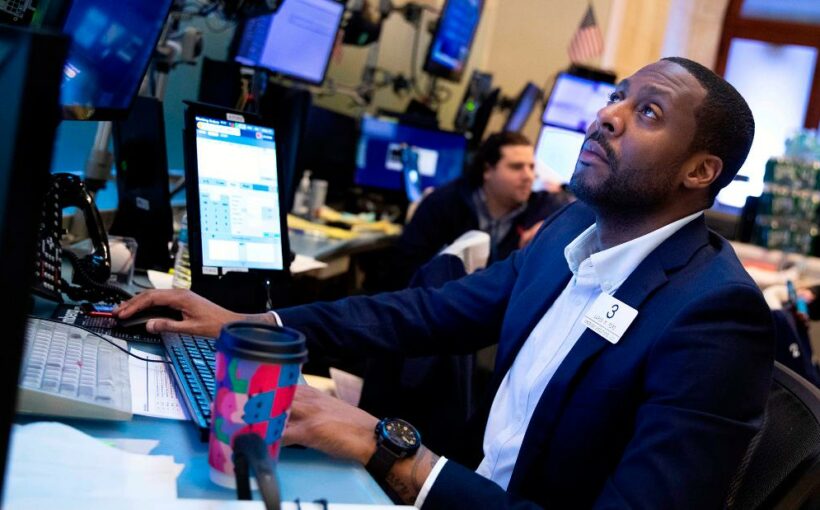New York (CNN Business)It’s been a year full of worries for investors, from geopolitical conflict to inflation to the pandemic, and it doesn’t look like the concerns will ease anytime soon.
The combination of these major macroeconomic and geopolitical issues will make it difficult for stocks to climb out of their hole and finish 2022 in positive territory, some experts say.
“There are way too many headwinds to expect good returns for stocks this year,” said David Spika, president and chief investment officer of GuideStone Capital Management.
Despite big Wall Street rallies the past two days, the stock market has tumbled overall in 2022. The Dow is down nearly 7% this year, the S&P 500 has fallen about 10% and the Nasdaq is off more than 15%.
Three concerns in particular are weighing on stocks. Russia’s invasion of Ukraine has pushed oil prices up.
Before that, investors were already fretting about inflation and the likelihood that the Federal Reserve would raise interest rates multiple times this year to fight it. Meanwhile, Covid-19 hasn’t gone away, with the recent spike in cases in China raising alarm bells.
“I don’t see any way we get positive returns for stocks,” Spika said, adding that it would be a victory if stocks “only” fall in the single digits this year.
Uncertainty continues to weigh on investor sentiment
Spika said it’s unreasonable to expect that the Russia-Ukraine crisis will end anytime soon. And even if it did, Spika argues that stock valuations are too high given that interest rates are about to rise.
“Double-digit percentage drops are possible. The past few years were strong and that was fueled by easy monetary policy,” he said. “That tailwind is about to turn into a massive headwind.”
Stephanie Lang, chief investment officer with Homrich Berg, agreed that “the age of easy money is over.”
While the Fed’s higher interest rates are high on investors minds, it’s only one part of the problem for the stock market.
“The list of strains on stocks is pretty long. We have the war, the reminder that the pandemic is endemic and significant, long-lasting disruptions to supply chains,” said Vincent Reinhart, chief economist at Dreyfus and Mellon. “Investors are understandably hunkering down.”
Reinhart added that the Fed will probably raise rates several times this year to try to put a damper on inflation. But there are concerns that the central bank waited too long to raise rates and now may face a stagflation problem, the combination of slow growth and high prices.
“It’s going to be tough for the Fed to get it right,” Reinhart said. “Any reasonable person would say that recession risks are more elevated today than six months ago.”
Lang thinks the central bank “missed the mark on inflation” and will have to make more aggressive moves going forward.
The Fed is in a tough spot, but some hope it won’t raise rates too sharply
Other experts aren’t so sure that major moves are ahead. They say that the Fed recognizes there is a risk of going overboard with rate hikes, and that gradual, small increases may not slow down the economy too drastically. That could mean that the worst may soon be over for stocks.
“If the Fed overshoots on rate hikes that would be a longer term problem for the economy,” said Louise Goudy Willmering, a partner with Crewe Advisors. “But if the Fed isn’t too aggressive, we still can have growth. The economy doesn’t have to fall off the side of a cliff.”
Willmering also said that it’s way too early to give up on hopes of a market rebound later this year. It’s only March, after all.
Of course, it may be tough for stocks to stage to a huge rally like the one following “the fear induced drop of 2020,” she said. But she added that if worries about Ukraine and supply chain issues finally subside, earnings growth could return to more normal levels, which would boost stocks.
Even if the broader market does continue to struggle, there may be some pockets of strength.
Lang said investors should be looking at quality, safe haven stocks that pay dividends, such as consumer goods companies and healthcare firms. And Spika said energy stocks and smaller companies with more exposure to the US economy than international markets should also do well in a rising rate environment.
Still, even with stocks rebounding as they have the past few days, there may be more volatility ahead — which could create better opportunities for investors.
“When do you start buying?” Spika said. “Once we get clarity about what’s going on in Ukraine.”
Source: Read Full Article


